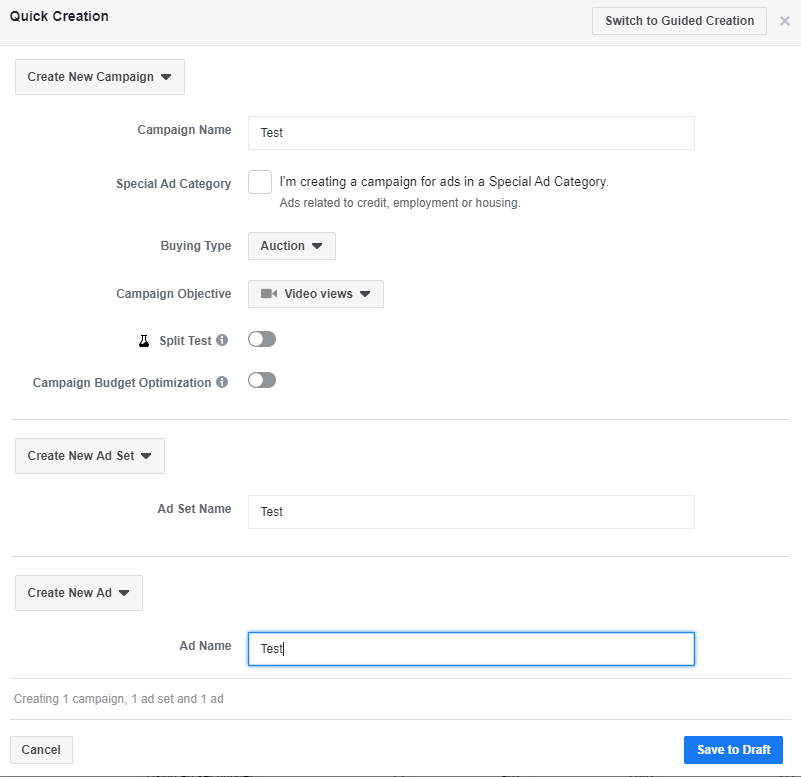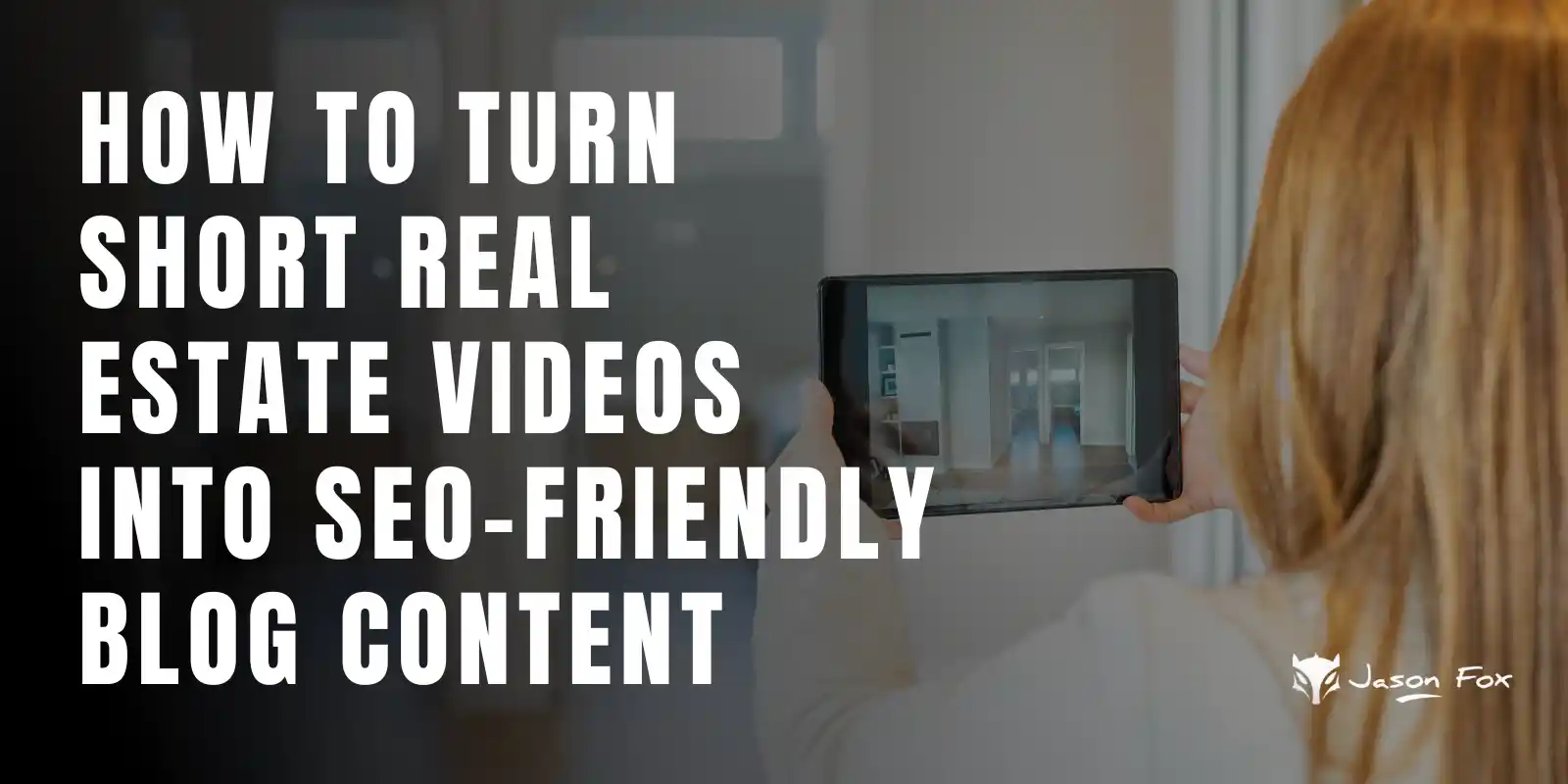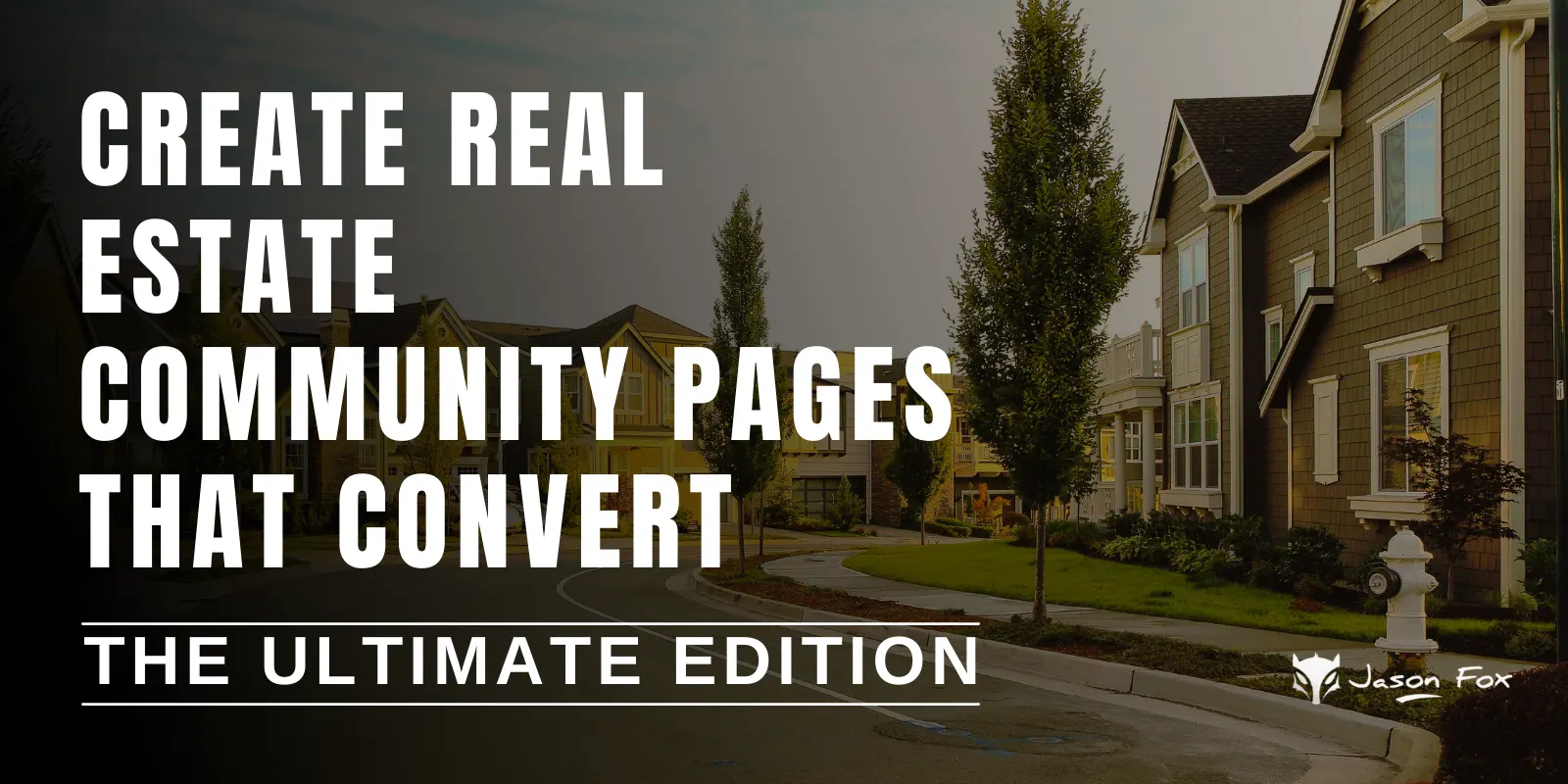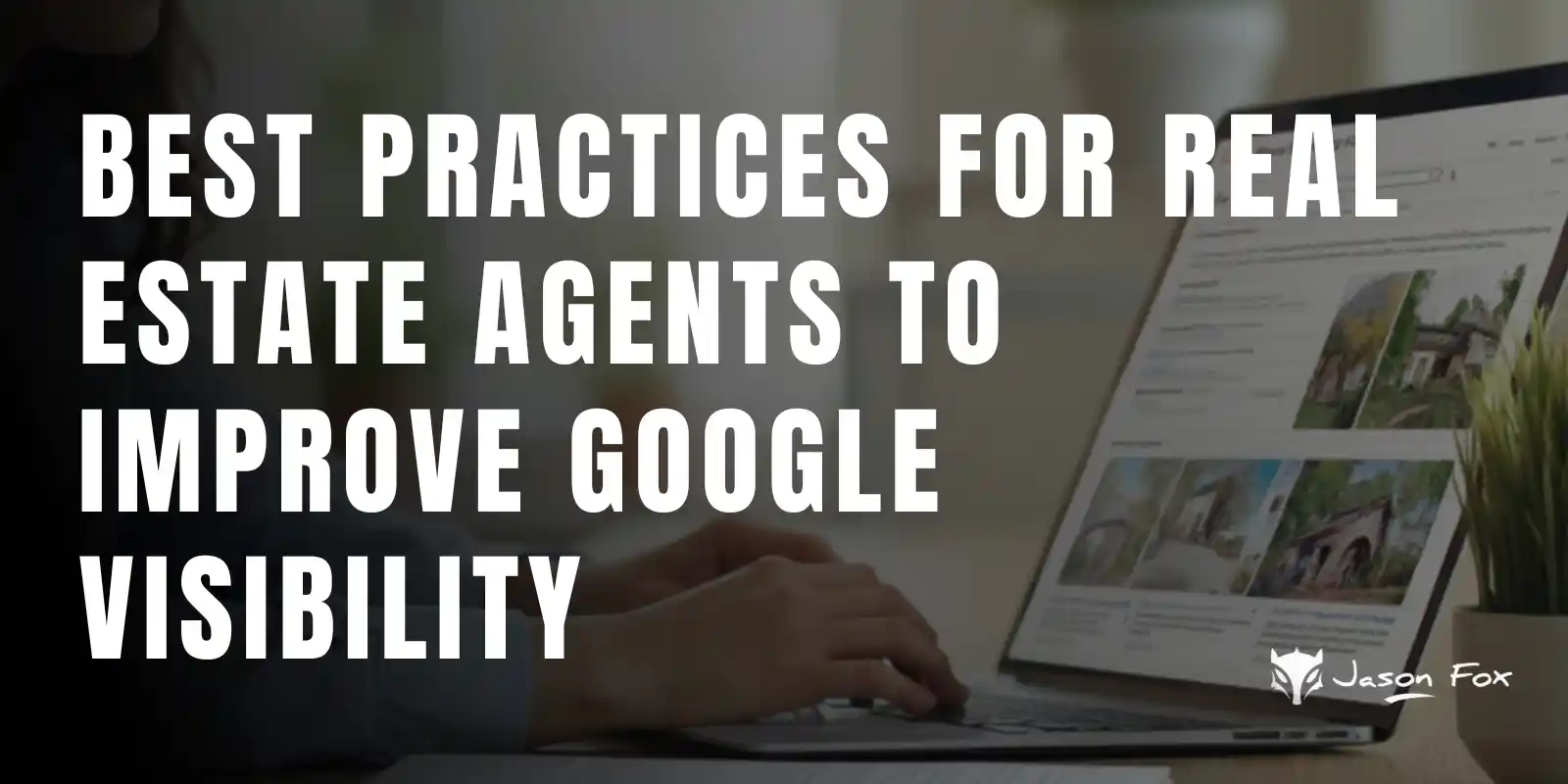How Realtors can use Geo-Targeting and Remarketing to Get Higher Quality Leads
Geotargeting involves delivering specific content and advertising to people based on where they are and their demographic.
Realtors can and should use geo and demographic-targeting to further their businesses because it helps them dominate certain areas and ensure business will flow to them smoothly and predictably.
Real estate deals will attract different types of buyers and sellers. So a generic one-size-fits-all approach is the fastest way to waste advertising dollars. Preparing costs analysis and feasibility studies for real estate projects (which sometimes includes construction and renovations) is critical to calculating profit margins. This why we need to be able to target the right people at the right time in the right location.
For example our friends at I am Builders manages and consults for Realtors and Real Estate Developers including managing their web presence for their companies, deals, and projects. Part of their service includes estimating services to prepare budgets for projects. They then help them market their projects targeting the right audience for their specific project.
They are going to share some of the best golden nuggets they have discovered after being in the industry for so long, so hopefully you find a ton of value in this piece.
How can Geotargeting and Remarketing Bring Higher Quality Leads?
If you came up to me and asked me if I would rather have the phone numbers of 2,000 homeowners of $200,000 homes or the phone numbers of 300 homeowners of $600,000 homes, the answer would always be the latter.
Everybody knows that relationships are everything in this business, but people can be quick to forget that the location of those relationships are also everything.
This is where geotargeting and remarketing comes into the picture, instead of trying to be the #1 agent in your entire city, why not be the number one agent in a specific neighborhood? Or on a block?
Honing in and focusing on specific locations can drastically improve your results and actually result in more business than if you focused on broader, more general areas. That’s why learning how to master geo-targeting/remarketing should be next on every real estate agent’s to-do list.
Let’s go through what you need to know.
Geotargeting Implementation
Geotargeting involves targeting potential clients or sellers based on their location. There are several ways to do this including Local SEO where you are found on the search engines because you are a highly rated company close to where you are searching from, and Facebook that allows you to target as specific as a small radius around a specific location. The implementation of geotargeting marketing is actually quite simple, if you’re marketing on Facebook, then you’d create an audience of only people in the specific area that you want to work in and advertise to them. The same concept applies to Instagram.
However, in this business social media is best when used for re-marketing and not necessarily lead generation. Real estate agents are in the relationship business and forming a relationship with a prospect over an ad is not the best way to start off on the right foot.
Because of this, if you want to really get leads like crazy, you’re going to have to pick up the phone and talk to (a lot) of people.
Ok, great, but how do you get everyone’s phone numbers, and what do you even say? And what are some good cold calling tips?
Both are fair questions, and I will address them both now.
First of all, if you’re planning on cold-calling or cold-texting leads, I recommend installing the GeoLeads software by Redx. It’s affordable and gives you all you need to get started farming neighborhoods for your business.
Next, you’re going to need to develop a script to use when you’re cold calling or cold- texting people. Cold-calling can look something like:
[Phone rings]
Prospect: Hello?
Agent: Hi Mr. Smith, this is Jason Fox with [insert real estate company] how are you doing today? (don’t sound salesy)
Prospect: I’m doing good.
Agent: That’s great, well I don’t want to take up too much of your time, but [insert local market activity], and I just wanted to see if there was anything I could do for you.
Prospect: Oh no, that’s ok. We don’t plan on moving out soon.
Agent: Ok, no problem, but when you do decide to sell your home, I’d love the chance to work with you. Is it ok if we stay in touch through email?
Prospect: Ok, it’s [email protected].
Agent: Thank you so much. Have a great rest of day.
Of course it’s not going to be word-for-word, but something similar mixed in with a bit of your own unique personality is a winning recipe.
In case you didn’t notice, at the end of the call we asked for the email address of our prospect, this is going to be used for re-marketing later on in our sales process and we’re going to cover it later on in this article
Back to geotargeting.
The main problem with cold-calling is that people have grown extremely skeptical of salespeople on the phone, in fact, most people hang up the moment they hear a salesperson talking. This makes it a bit difficult for people like you and me to make a living.
Now, don’t get me wrong. Cold-calling works. It puts you right in front of the prospect and immediately gets a relationship started. But, the time it takes to call people one-by-one can be more than what it’s worth.
That’s why I believe cold-texting is the ultimate way to reach an entire neighborhood in less than half the time it would take through traditional calling.
Think of cold-texting as copywriting, and cold-calling as closing.
This is music to every introvert’s ears. They can now fulfill their dreams of selling 100 homes a year. Let’s go over an example cold-texting script:
Hi, it’s Jason Fox with [insert real estate company], just reaching out to you because [insert local market activity] and I was wondering if there is anything I could do for you. I’m excited to help!
I’d love to hear more about what you’re looking for; Feel free to reply to this text or give me a call.
Looking forward to working with you!
It’s very similar to the cold-calling script in nature, with a more personal feel to it since it’s done through text.
So, we’ve gone over how to generate the leads, and now we’re going to go over how to re-market to those leads to ensure a steady stream of business over time.
Remarketing
In a nutshell, re-marketing as a real estate agent heavily involves email, calls, texts, and social media. You may already be calling people back and setting alerts to reach out to prospects, or boosting some posts on Facebook, but email is where you really shine.
Emailing prospects consistently every week allows you to get in front of them and have them remember you so that when the time comes to sell their home or to buy a home, you’re the first person they call.
Simple as that.
Now, the next issue is what exactly to include in your emails. Let’s talk about it.
Have you ever had a favorite show? Every week, you would count down the minutes to when the newest episode would air. In this same way, people need to look forward to your special email every week.
Essentially, you want to pack in so much value in your weekly email that people actually get a hint of dopamine when they see the notification pop up on their phone or on their computer.
To make this happen you need to ask yourself, “what is valuable to the average homeowner?”
Seriously, sit back for a second and ask yourself that question.
How much their house is worth? Amazing deals in their dream neighborhood? New schools popping up in the area? Yes! Those are all great topics to go over.
I’ve seen many different styles of email marketing, and I’ve noticed what performs the best are mini-articles that are very direct and tactical, on the traditional email format.
Ok, now let’s dive into re-marketing on social media.
Social Media
I prefer to see social media as a re-marketing tool for real estate agents simply because it’s such a personal business.
And to try to start off such an important relationship through a screen doesn’t have the same benefit as somebody hearing your voice and talking to you.
But, once they have spoken to you, it’s a perfect opportunity to target them again with relevant ads.
First, let’s go over how to do this on Facebook.
Here you’re going to create an audience of everyone you’ve called/texted and set up a sequence of ads, or a funnel, to slowly help them trust you more. This positions you as an authority and makes it very likely that they would call you when they need an agent.
It’s going to be a sequence of 3 ads, that are all videos of you giving super helpful advice and value. Remember, the goal is to be the authority, we’re selling ourselves.
To start off, go to business.facebook.com and open up Ads Manager.
Next, go over to the Campaigns tab and click on “create”.
Now, fill out the form. For campaign objective put “Video Views”, and for campaign budget put whatever fits your budget. In the beginning, you won’t need a lot of advertising since your email list will be relatively small, but as you spend more days calling/texting people and growing your list, your marketing budget will also grow.
After you click “Save to Draft”, you should see a dropdown menu from the side requesting you to edit your campaign before you publish it.
Here is where you’re going to create your audience, set your daily budget, and more. Most of it is simple to follow along, but you may need some assistance with the audience creation. Let’s quickly go through it.
-
- Go to top right of business manager, and click on Audience
- Click Create Audience (Lookalike Audience)
- Import list of emails from CRM software your company uses.
- Assign the audience to your ad set
This also let’s you run ads on Instagram at the same time, since they’re owned by Facebook. So you’re attacking the 2 biggest social media platforms at once.
Landing Page Optimization
Once you attract the perfect lead, you’re going to want to make sure your page is geared toward conversion. Many sites invest so much money in advertising and end up wasting much of it because their page is not geared toward conversion.
There are a few simple best practices to cover. This is an entire industry in itself, but I’ll share with a few a few simple things we’ve done to create highly converting pages.
Make sure pages are mobile optimized
Some websites are very difficult to use because users have to pinch-zoom to be able to read it. More than half of web visitors are now on mobile, therefore we actually should be prioritizing them over desktop at this point.
Most website systems are designed to be responsive, but older ones or custom built platforms might not be. WordPress and Unbounce are great to use for this.
Use a Call to Action Button or Form
You have to make it easy for users to sign up or call you. Every page of your website should be designed to make a potential lead either sign up on your form, or click the phone number to call you.
Buttons are great for a low-investment click. Sometimes users would rather click a “Learn More” button before investing in signing up and having a potential spammer call them. Robot calls and spam are a real problem and users are become very careful to not give out phone numbers and emails so easily.
You also test using a form directly on your landing page for an instant conversion. You should test both ways and see which one gives you better results. If you use Unbounce for your landing page, the platform tracks the conversions.
Call within 5 Minutes
Once you get a conversion, its critical that you call your lead within 5 minutes. Drift published a case study on this. There is a 10x decrease in making contact after 5 minutes. You can spend tons of time creating the perfect ad, landing page, convince someone to sign up, and you lose them because you take an hour to get back to them.
If you’re busy, you can hire someone, or use an Answering Service like AnswerConnect to instantly call them. Even if your answering service isn’t as great at selling as you are, the immediate phone call gets you connected faster than some other competitors might.
Conclusion
Combining the geo-targeted cold-texting and cold-calling strategies with a killer email and social media re-marketing campaign can result in a lot of business for any realtor.
Focusing on relationships and developing connections with people will always work in this business, and it doesn’t hurt that you’re also positioning yourself as an authority that your clients will refer you to for years to come.
I hope this article gave you a ton of value, now go make some calls!
post contents
Geotargeting involves delivering specific content and advertising to people based on where they are and their demographic.
Realtors can and should use geo and demographic-targeting to further their businesses because it helps them dominate certain areas and ensure business will flow to them smoothly and predictably.
Real estate deals will attract different types of buyers and sellers. So a generic one-size-fits-all approach is the fastest way to waste advertising dollars. Preparing costs analysis and feasibility studies for real estate projects (which sometimes includes construction and renovations) is critical to calculating profit margins. This why we need to be able to target the right people at the right time in the right location.
For example our friends at I am Builders manages and consults for Realtors and Real Estate Developers including managing their web presence for their companies, deals, and projects. Part of their service includes estimating services to prepare budgets for projects. They then help them market their projects targeting the right audience for their specific project.
They are going to share some of the best golden nuggets they have discovered after being in the industry for so long, so hopefully you find a ton of value in this piece.
How can Geotargeting and Remarketing Bring Higher Quality Leads?
If you came up to me and asked me if I would rather have the phone numbers of 2,000 homeowners of $200,000 homes or the phone numbers of 300 homeowners of $600,000 homes, the answer would always be the latter.
Everybody knows that relationships are everything in this business, but people can be quick to forget that the location of those relationships are also everything.
This is where geotargeting and remarketing comes into the picture, instead of trying to be the #1 agent in your entire city, why not be the number one agent in a specific neighborhood? Or on a block?
Honing in and focusing on specific locations can drastically improve your results and actually result in more business than if you focused on broader, more general areas. That’s why learning how to master geo-targeting/remarketing should be next on every real estate agent’s to-do list.
Let’s go through what you need to know.
Geotargeting Implementation
Geotargeting involves targeting potential clients or sellers based on their location. There are several ways to do this including Local SEO where you are found on the search engines because you are a highly rated company close to where you are searching from, and Facebook that allows you to target as specific as a small radius around a specific location. The implementation of geotargeting marketing is actually quite simple, if you’re marketing on Facebook, then you’d create an audience of only people in the specific area that you want to work in and advertise to them. The same concept applies to Instagram.
However, in this business social media is best when used for re-marketing and not necessarily lead generation. Real estate agents are in the relationship business and forming a relationship with a prospect over an ad is not the best way to start off on the right foot.
Because of this, if you want to really get leads like crazy, you’re going to have to pick up the phone and talk to (a lot) of people.
Ok, great, but how do you get everyone’s phone numbers, and what do you even say? And what are some good cold calling tips?
Both are fair questions, and I will address them both now.
First of all, if you’re planning on cold-calling or cold-texting leads, I recommend installing the GeoLeads software by Redx. It’s affordable and gives you all you need to get started farming neighborhoods for your business.
Next, you’re going to need to develop a script to use when you’re cold calling or cold- texting people. Cold-calling can look something like:
[Phone rings]
Prospect: Hello?
Agent: Hi Mr. Smith, this is Jason Fox with [insert real estate company] how are you doing today? (don’t sound salesy)
Prospect: I’m doing good.
Agent: That’s great, well I don’t want to take up too much of your time, but [insert local market activity], and I just wanted to see if there was anything I could do for you.
Prospect: Oh no, that’s ok. We don’t plan on moving out soon.
Agent: Ok, no problem, but when you do decide to sell your home, I’d love the chance to work with you. Is it ok if we stay in touch through email?
Prospect: Ok, it’s [email protected].
Agent: Thank you so much. Have a great rest of day.
Of course it’s not going to be word-for-word, but something similar mixed in with a bit of your own unique personality is a winning recipe.
In case you didn’t notice, at the end of the call we asked for the email address of our prospect, this is going to be used for re-marketing later on in our sales process and we’re going to cover it later on in this article
Back to geotargeting.
The main problem with cold-calling is that people have grown extremely skeptical of salespeople on the phone, in fact, most people hang up the moment they hear a salesperson talking. This makes it a bit difficult for people like you and me to make a living.
Now, don’t get me wrong. Cold-calling works. It puts you right in front of the prospect and immediately gets a relationship started. But, the time it takes to call people one-by-one can be more than what it’s worth.
That’s why I believe cold-texting is the ultimate way to reach an entire neighborhood in less than half the time it would take through traditional calling.
Think of cold-texting as copywriting, and cold-calling as closing.
This is music to every introvert’s ears. They can now fulfill their dreams of selling 100 homes a year. Let’s go over an example cold-texting script:
Hi, it’s Jason Fox with [insert real estate company], just reaching out to you because [insert local market activity] and I was wondering if there is anything I could do for you. I’m excited to help!
I’d love to hear more about what you’re looking for; Feel free to reply to this text or give me a call.
Looking forward to working with you!
It’s very similar to the cold-calling script in nature, with a more personal feel to it since it’s done through text.
So, we’ve gone over how to generate the leads, and now we’re going to go over how to re-market to those leads to ensure a steady stream of business over time.
Remarketing
In a nutshell, re-marketing as a real estate agent heavily involves email, calls, texts, and social media. You may already be calling people back and setting alerts to reach out to prospects, or boosting some posts on Facebook, but email is where you really shine.
Emailing prospects consistently every week allows you to get in front of them and have them remember you so that when the time comes to sell their home or to buy a home, you’re the first person they call.
Simple as that.
Now, the next issue is what exactly to include in your emails. Let’s talk about it.
Have you ever had a favorite show? Every week, you would count down the minutes to when the newest episode would air. In this same way, people need to look forward to your special email every week.
Essentially, you want to pack in so much value in your weekly email that people actually get a hint of dopamine when they see the notification pop up on their phone or on their computer.
To make this happen you need to ask yourself, “what is valuable to the average homeowner?”
Seriously, sit back for a second and ask yourself that question.
How much their house is worth? Amazing deals in their dream neighborhood? New schools popping up in the area? Yes! Those are all great topics to go over.
I’ve seen many different styles of email marketing, and I’ve noticed what performs the best are mini-articles that are very direct and tactical, on the traditional email format.
Ok, now let’s dive into re-marketing on social media.
Social Media
I prefer to see social media as a re-marketing tool for real estate agents simply because it’s such a personal business.
And to try to start off such an important relationship through a screen doesn’t have the same benefit as somebody hearing your voice and talking to you.
But, once they have spoken to you, it’s a perfect opportunity to target them again with relevant ads.
First, let’s go over how to do this on Facebook.
Here you’re going to create an audience of everyone you’ve called/texted and set up a sequence of ads, or a funnel, to slowly help them trust you more. This positions you as an authority and makes it very likely that they would call you when they need an agent.
It’s going to be a sequence of 3 ads, that are all videos of you giving super helpful advice and value. Remember, the goal is to be the authority, we’re selling ourselves.
To start off, go to business.facebook.com and open up Ads Manager.
Next, go over to the Campaigns tab and click on “create”.
Now, fill out the form. For campaign objective put “Video Views”, and for campaign budget put whatever fits your budget. In the beginning, you won’t need a lot of advertising since your email list will be relatively small, but as you spend more days calling/texting people and growing your list, your marketing budget will also grow.
After you click “Save to Draft”, you should see a dropdown menu from the side requesting you to edit your campaign before you publish it.
Here is where you’re going to create your audience, set your daily budget, and more. Most of it is simple to follow along, but you may need some assistance with the audience creation. Let’s quickly go through it.
-
- Go to top right of business manager, and click on Audience
- Click Create Audience (Lookalike Audience)
- Import list of emails from CRM software your company uses.
- Assign the audience to your ad set
This also let’s you run ads on Instagram at the same time, since they’re owned by Facebook. So you’re attacking the 2 biggest social media platforms at once.
Landing Page Optimization
Once you attract the perfect lead, you’re going to want to make sure your page is geared toward conversion. Many sites invest so much money in advertising and end up wasting much of it because their page is not geared toward conversion.
There are a few simple best practices to cover. This is an entire industry in itself, but I’ll share with a few a few simple things we’ve done to create highly converting pages.
Make sure pages are mobile optimized
Some websites are very difficult to use because users have to pinch-zoom to be able to read it. More than half of web visitors are now on mobile, therefore we actually should be prioritizing them over desktop at this point.
Most website systems are designed to be responsive, but older ones or custom built platforms might not be. WordPress and Unbounce are great to use for this.
Use a Call to Action Button or Form
You have to make it easy for users to sign up or call you. Every page of your website should be designed to make a potential lead either sign up on your form, or click the phone number to call you.
Buttons are great for a low-investment click. Sometimes users would rather click a “Learn More” button before investing in signing up and having a potential spammer call them. Robot calls and spam are a real problem and users are become very careful to not give out phone numbers and emails so easily.
You also test using a form directly on your landing page for an instant conversion. You should test both ways and see which one gives you better results. If you use Unbounce for your landing page, the platform tracks the conversions.
Call within 5 Minutes
Once you get a conversion, its critical that you call your lead within 5 minutes. Drift published a case study on this. There is a 10x decrease in making contact after 5 minutes. You can spend tons of time creating the perfect ad, landing page, convince someone to sign up, and you lose them because you take an hour to get back to them.
If you’re busy, you can hire someone, or use an Answering Service like AnswerConnect to instantly call them. Even if your answering service isn’t as great at selling as you are, the immediate phone call gets you connected faster than some other competitors might.
Conclusion
Combining the geo-targeted cold-texting and cold-calling strategies with a killer email and social media re-marketing campaign can result in a lot of business for any realtor.
Focusing on relationships and developing connections with people will always work in this business, and it doesn’t hurt that you’re also positioning yourself as an authority that your clients will refer you to for years to come.
I hope this article gave you a ton of value, now go make some calls!
Latest articles
Short real estate videos can be transformed into powerful blog content with the right strategy. Learn how to expand on video topics, incorporate SEO best practices, and create engaging posts that drive traffic and boost your search rankings.
Learn how to create real estate community pages that attract buyers, boost your local SEO, and establish you as a market expert. This ultimate guide covers content creation tips, the use of AI tools, and IDX integration to help your pages stand out in 2024.
To stay competitive in real estate, agents must prioritize SEO to improve their Google visibility. By implementing proven strategies like asking for reviews, creating relevant content, and focusing on local SEO, you can attract more clients and increase your online presence.
BECOME A MEMBER
Become A Free DIY Real Estate Marketing Member & Get Access To:
LARGEST COLLECTION OF
Real Estate Marketing e-Books, Guides, Templates, & whitepapers
ON THE INTERNET
+ OVER 70 How To Website Training Videos including; WordPress, Agent Evolution Themes, & IDX Broker
+ DIY Real Estate Marketing Tips and Strategies Delivered to Your Inbox
Share this article
Written by : jasonfox
Jason Fox - Real Estate Marketing
Business: We build WordPress Real Estate Websites with IDX
Me: #GoHawks, #BringBackTheSonics, #MaybeNextYearMariners, #ILoveMyKids #SeattleSunLover #SeattleWaterLover #BFF
Blog: Focuses on Wordpress Websites, Content Management, SEO Services, SEM Campaigns, Social Media Marketing, Email Marketing, Beautiful Design, IDX, and more.







